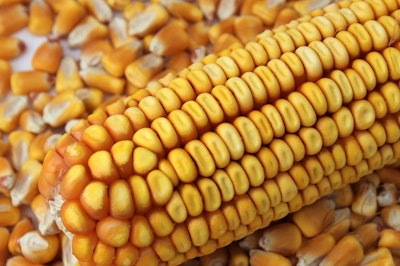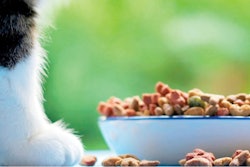
During the last decade, we’ve seen sustained growth in the development of the pet food industry in most of Latin America’s countries. All product segments are found on the shelves of all markets, with the superpremium food supply coming primarily from the U.S., Brazil and Mexico.
Yet superpremium pet foods represent the smallest volume of participation in this region. Instead, economic and mainstream brands (18 percent protein or less, and 8 percent fat or less) and premium brands (21 percent protein and 9 percent fat) prevail. There are also options for acquiring imported products, mainly from brands belonging to multinationals; however, the majority of economic, mainstream and premium products are manufactured locally.
Grain and vegetable protein pet food ingredients used
Regarding grains for formulation, corn is most used as the first option, since its availability is high locally or regionally, often imported from Brazil, Argentina and the U.S. Rice is also a very popular cereal in pet food; for example, in Brazil, it is frequently used in high amounts in formulations. Colombia, Peru, Argentina and Chile are among the countries that harvest rice in Latin America, yet there are other countries where it is not commonly available.
While wheat is also consumed in Argentina, Bolivia, Paraguay, Brazil, Mexico and Bolivia, it is used in much smaller amounts in pet food formulation. Finally, locally harvested sorghum is used in some places as a partial substitute for corn.
Soybean and corn gluten meals are the main vegetable protein sources used in most countries of the region; canola meal is included in small amounts in some countries. Dry distillers grain solubles (DDGS) are also used in the design of some low-profile diets.
Protein pet food ingredients are a challenge
Meals and fats of animal origin present a huge challenge. Though there are many reliable sources from the point of view of raw material availability, with several countries producing these ingredients, they still have many opportunities for improvement in processing and especially in preservation.
Brazil, Mexico, Peru, Colombia, Argentina and Chile lead the supply of avian meals. Nicaragua, Argentina, Paraguay and Brazil head the beef meal market. In addition, the U.S. is a very important supplier of this premium ingredient, though strict regulatory restrictions exist for exporting ruminant meals from the U.S. and Mexico to other countries in Latin America since the original BSE breakout crisis.
Sources of fiber and additives for pet foods
The primary source of fiber used in Latin America is wheat bran of local or regional origins, although sometimes soybean hulls are also used, originally from soybean-producing countries.
Pet food additives are imported mainly from the U.S., yet local options exist for some of them. A good example is natural flavors, which can be purchased in countries like Chile, Argentina, Peru, Brazil and Mexico.
Opportunities to increase pet food ingredients in Latin America
While there are many opportunities to increase the use of ingredients available within the Latin American zone, a lot of work still needs to be done in terms of sanitary and commercial regulations in order to increase transactions between countries.
In addition, options are available to strengthen and develop national markets with the use of local ingredients in pet food formulations upon evaluation. Examples include potato flour, cassava flour, fruit by-products or fibers from tequila cactus, among others.

















